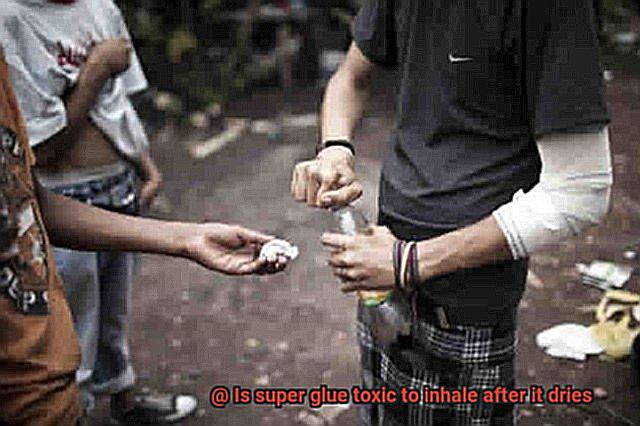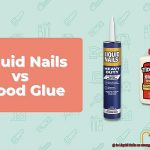Picture this: you’re fixing that broken vase with super glue, marveling at its adhesive powers. But did you know that lurking beneath its sticky surface lies a potential health hazard? Yep, inhaling super glue fumes after it dries can actually be seriously harmful to your respiratory system.
Now, don’t be fooled by its innocent appearance. Super glue is packed with chemical ingredients that release invisible fumes as it dries. These sneaky gases often go unnoticed, but they can wreak havoc on your well-being if inhaled.
In this blog post, we’re diving deep into the nitty-gritty of how inhaling those dried super glue fumes can mess with your health. With expert insights and a dash of common sense, we’ll shed light on the risks involved in breathing in these toxic gases. Armed with this knowledge, you’ll be able to take the necessary precautions to protect yourself and keep your lungs happy and healthy. So buckle up and get ready for some eye-opening information.
What is Super Glue?
Contents
- 1 What is Super Glue?
- 2 What are the Potential Health Risks of Inhaling Super Glue Fumes?
- 3 How to Minimize Risk from Inhaling Super Glue Fumes
- 4 Symptoms of Inhalation of Super Glue Fumes
- 5 Allergic Reactions to Super Glue Vapors
- 6 Is Super Glue Toxic to Inhale After it Dries?
- 7 Long-Term Effects of Inhaling Super Glue Fumes
- 8 Prevention Tips for Avoiding Exposure to Super Glue Fumes
- 9 Conclusion
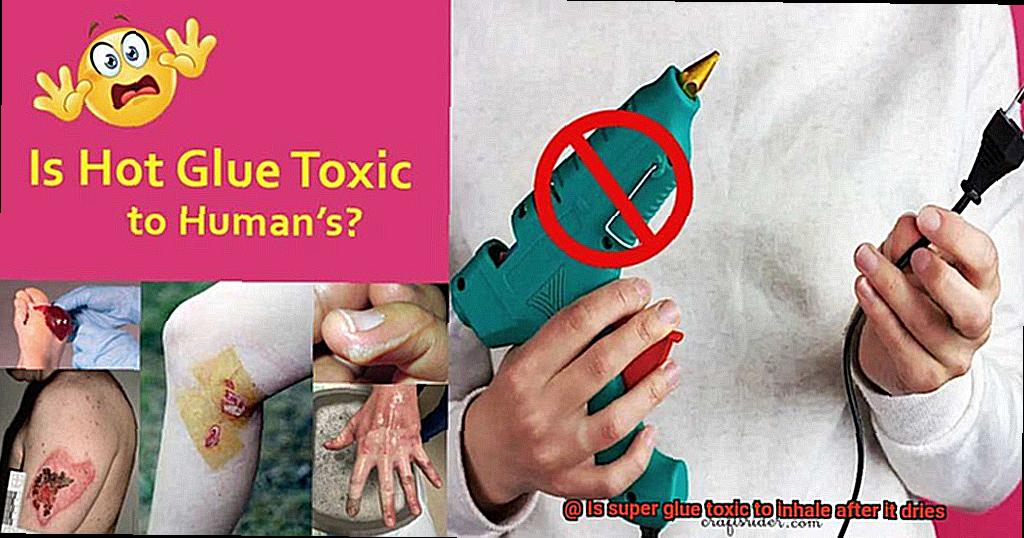
Super Glue, also known as cyanoacrylate adhesive, is a remarkable substance that has revolutionized the world of adhesives. With its ability to bond quickly and strongly to a variety of materials, it has become a staple in many industries and households.
Derived from a compound called cyanoacrylic acid, Super Glue is a clear, colorless liquid that transforms into a solid state when exposed to moisture. This unique composition allows it to create powerful bonds on surfaces such as metal, plastic, rubber, ceramic, and even skin. Its versatility makes it an essential tool for repairs, DIY projects, and everyday applications.
One of the standout features of Super Glue is its rapid bonding capability. Upon contact with moisture, whether from the air or the surface itself, it undergoes a process called polymerization. Within seconds, long chains of molecules form and interlock, creating a solid bond that can withstand tremendous forces. This quick-drying nature makes Super Glue invaluable in situations where immediate bonding is required.
Packaged in small bottles or tubes with a handy nozzle, Super Glue is designed for easy application. Its thin and watery consistency allows it to flow effortlessly into tight spaces, ensuring complete coverage and a strong bond. This low viscosity characteristic not only simplifies the application process but also minimizes the amount of glue needed.
In addition to its rapid bonding properties, Super Glue boasts high shear strength. It can endure pulling and shearing forces without breaking or separating, making it ideal for applications that involve stress or strain on bonded surfaces. Furthermore, it exhibits resistance to temperature extremes and most chemicals, allowing it to perform reliably in various environments.
While Super Glue offers incredible bonding capabilities, it is essential to handle it with care. Although the vapors released during normal use are generally considered low in toxicity, it is advisable to work in a well-ventilated area to minimize inhalation of fumes. In the event of accidental inhalation or persistent respiratory symptoms, seeking medical attention is recommended.
What are the Potential Health Risks of Inhaling Super Glue Fumes?
Inhaling super glue fumes can have potential health risks that should not be overlooked. When super glue dries, it releases cyanoacrylate vapor, which can be harmful if inhaled. The toxicity level of these fumes can vary depending on the concentration, duration of exposure, and individual sensitivity. It’s important to understand the potential hazards associated with inhaling these fumes.
Short-term exposure to super glue fumes can lead to irritating symptoms such as coughing, sneezing, throat irritation, and difficulty breathing. These effects are usually temporary and subside once the fumes dissipate. However, prolonged or repeated exposure to these fumes can lead to more severe health issues.
Individuals with pre-existing respiratory conditions or sensitivities may be particularly vulnerable to the harmful effects of inhaling super glue fumes. They may experience asthma-like symptoms, bronchitis, or even chemical pneumonitis from prolonged exposure. In extreme cases, excessive inhalation can cause chemical burns in the respiratory tract or damage to the lungs.
To minimize the risks associated with inhaling super glue fumes, it is crucial to take necessary precautions. Working in a well-ventilated area or using a fan to circulate fresh air can help disperse the fumes and reduce the concentration inhaled. Additionally, wearing a mask or respirator can offer further protection by preventing direct inhalation.
If someone experiences severe symptoms after inhaling super glue fumes, immediate medical attention should be sought. While most instances of exposure to these fumes do not cause long-lasting harm, it is always better to err on the side of caution and prioritize one’s health.
How to Minimize Risk from Inhaling Super Glue Fumes
Super glue, also known as cyanoacrylate adhesive, is a strong adhesive that can release fumes that may be harmful when inhaled. To minimize the risk of inhaling super glue fumes, it is important to take certain precautions.
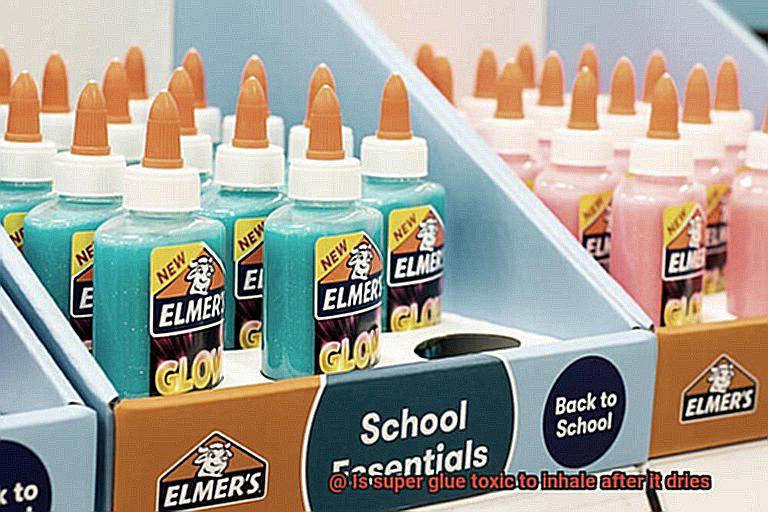
Work in a Well-Ventilated Area
When using super glue, make sure to work in a well-ventilated area. This means opening windows or using fans to improve air circulation. Working in a well-ventilated area helps to dissipate the fumes and reduce the concentration of airborne particles. Avoid working in small, enclosed spaces like closets where the fumes can accumulate and become more concentrated.
Wear a Mask or Respirator
To further minimize the risk of inhaling super glue fumes, consider wearing a mask or respirator specifically designed for fume protection. Choose a mask or respirator with a high-efficiency particulate air (HEPA) filter to effectively filter out tiny particles and reduce exposure to harmful fumes. Ensure the mask or respirator provides a proper seal and fits comfortably on your face for maximum protection.
Use Gloves and Protective Eyewear
Accidental contact with super glue can be harmful, so it is important to wear gloves and protective eyewear when working with the adhesive. Gloves prevent direct contact with the skin, while protective eyewear prevents accidental contact with the eyes.
Follow Manufacturer’s Instructions
It is crucial to follow the manufacturer’s instructions when using super glue. This includes following the recommended application and drying time. Allowing the glue to fully dry before entering the area can significantly reduce the release of fumes. Wait for at least 24 hours or follow the instructions provided by the manufacturer.
Store Super Glue Properly
Properly store super glue containers in airtight containers or bags to prevent accidental exposure to fumes when not in use. Ensure the containers are properly sealed and stored in a cool, dry place away from heat sources.
Remember, if any symptoms of respiratory irritation or allergic reactions occur after inhaling super glue fumes, such as coughing, wheezing, or difficulty breathing, seek medical attention immediately. A healthcare professional can provide appropriate treatment and advice based on your symptoms and medical history.
Symptoms of Inhalation of Super Glue Fumes
Even after the glue has dried, the chemicals in super glue can still release toxic vapors. In this article, we will explore the symptoms that may arise from inhaling super glue fumes and provide valuable tips to prevent exposure.
The Fiery Sting of Respiratory Irritation:
Super glue fumes have a knack for irritating your respiratory system. A burning sensation scorches your throat, leaving you coughing and gasping for air. Breathing becomes an uphill battle, as if your lungs are wrestling with a heavyweight champion. Wheezing and chest tightness may also join this tumultuous assault on your respiratory well-being.
Eyes, the Window to Irritation:
A direct encounter with super glue fumes or an accidental splash onto your precious eyes can cause a world of pain. Redness and watering turn your eyes into a watery battleground. A stinging sensation claws at your delicate corneas, threatening your vision with blurred chaos.
The World Spins: Dizziness and Lightheadedness:
The toxic chemicals present in super glue have the power to disrupt your central nervous system. As a result, inhaling its fumes can leave you feeling like you’re caught in a dizzying whirlwind or floating on clouds of lightheadedness.
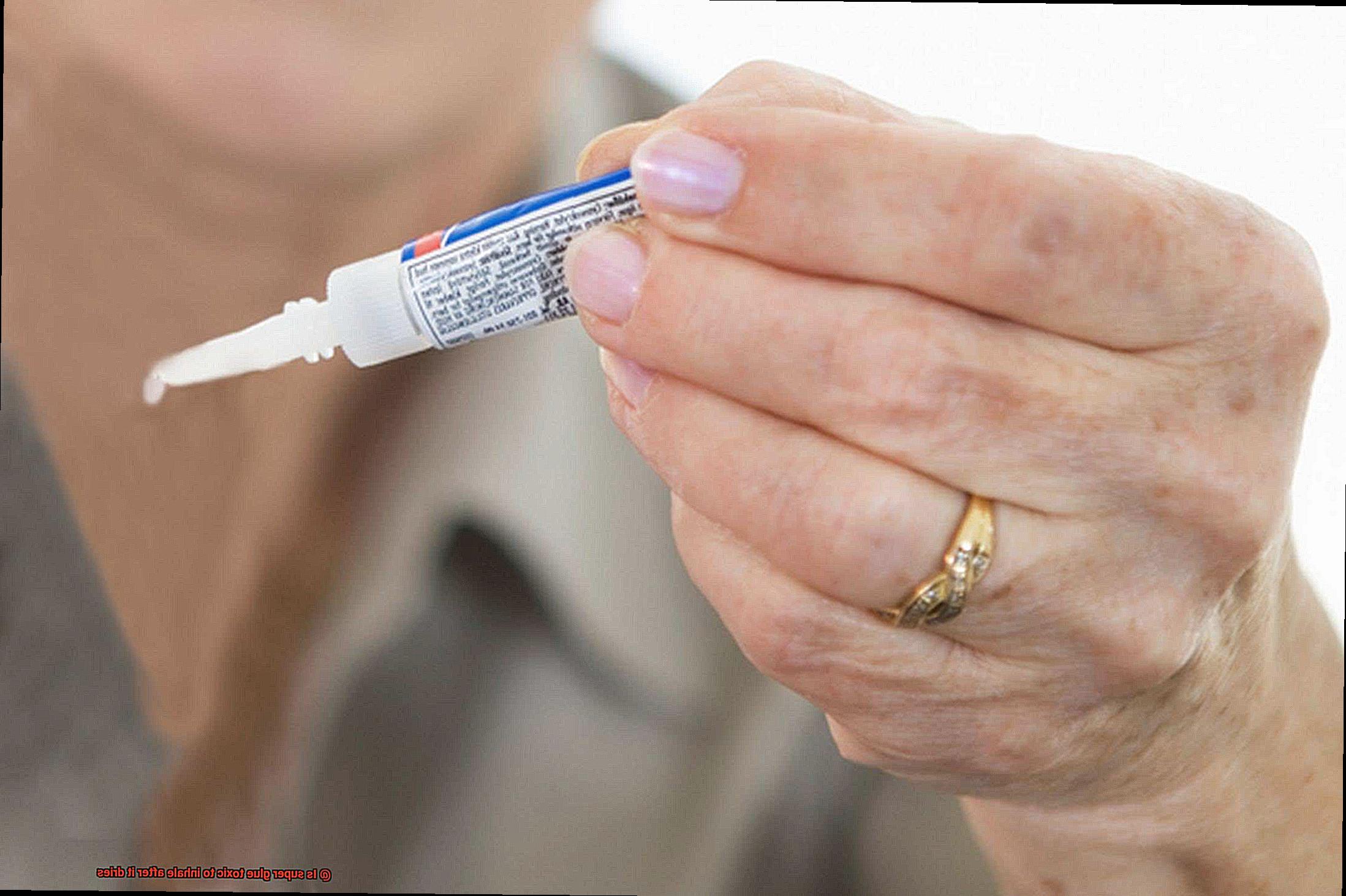
The Throb of a Headache:
The pungent odor of super glue can be a trigger for headaches and migraines – it’s like a jackhammer pounding inside your skull. If you have a sensitivity to strong odors, working in a well-ventilated area or donning a mask becomes essential to keep these painful headaches at bay.
Allergic Reactions and Long-Term Health Hazards:
Extended or repeated exposure to super glue fumes can unleash a cascade of allergic reactions. Your skin may break out in rashes or hives, retaliating against the chemical assault. Furthermore, long-term respiratory issues, such as asthma or bronchitis, may become unwelcome companions on your health journey.
When It Gets Serious: Nausea, Vomiting, and Loss of Consciousness:
In rare cases of extreme exposure or accidental ingestion of super glue, the symptoms take a turn for the worse. Nausea churns your stomach, waves of vomiting crash over you, and the world slips away as consciousness fades. These dire situations demand immediate medical attention – don’t delay.
Allergic Reactions to Super Glue Vapors
Allergic reactions to super glue vapors can be a rare but possible occurrence. When exposed to the fumes, some individuals may experience irritating and uncomfortable symptoms. These can include redness, itching, and swelling in the eyes, nose, throat, or skin. While these allergic reactions are typically mild, it is important to address them promptly to prevent further discomfort.
Additionally, super glue vapors can also cause respiratory irritation. The main component of super glue, cyanoacrylate, is generally considered to be a low toxicity substance. However, when it comes into contact with moisture, such as in the respiratory system, it can release small amounts of formaldehyde. This release can irritate the respiratory system, especially in individuals with pre-existing conditions like asthma or COPD.
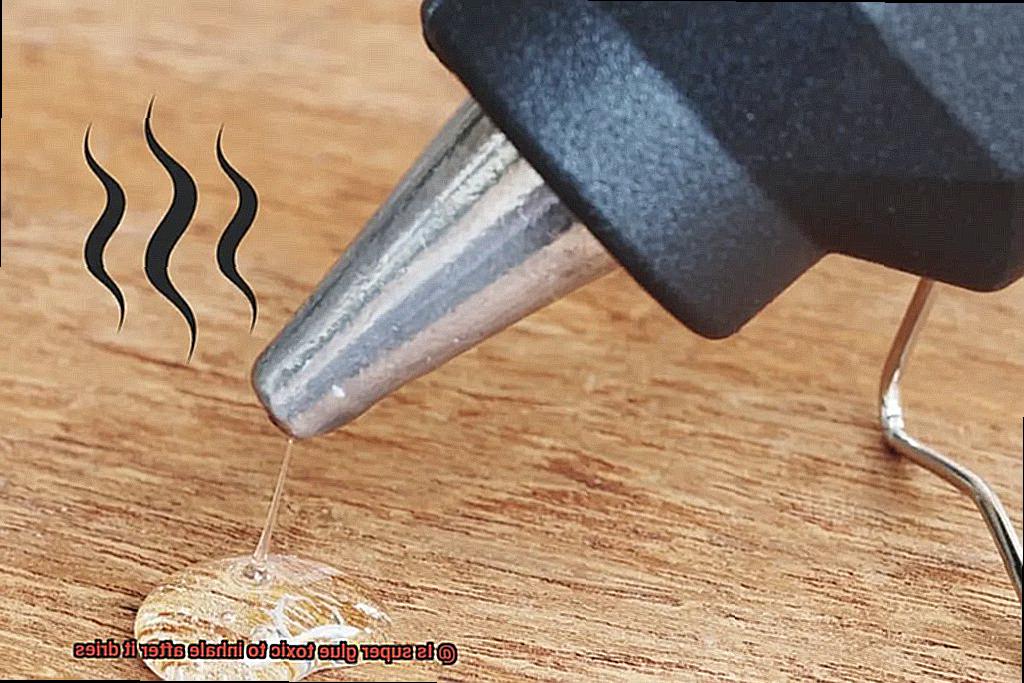
To minimize the risk of allergic reactions and respiratory irritation, it is advisable to work in a well-ventilated area when using super glue. Opening windows or using fans to disperse the vapors can help reduce exposure. Wearing gloves and a mask can provide additional protection.
Is Super Glue Toxic to Inhale After it Dries?
Super glue, also known as cyanoacrylate adhesive, is a powerful adhesive that creates a strong bond between surfaces when it dries. However, it’s crucial to understand the potential risks associated with inhaling super glue fumes, even after it has dried.
When super glue dries, it releases fumes that can be harmful if inhaled in large quantities. These fumes can irritate the eyes, nose, and throat, leading to symptoms such as watery eyes, a sore throat, coughing, and difficulty breathing. In rare cases, inhaling significant amounts of super glue fumes can result in more severe health issues like respiratory distress or chemical pneumonia.
The toxicity of super glue fumes varies based on an individual’s sensitivity and the amount of exposure. Some people may be more susceptible to adverse effects than others. To minimize the risk of inhaling super glue fumes, it is essential to use the adhesive in a well-ventilated area or wear a mask or respirator for added protection.
Once super glue has fully dried and cured, it is considered non-toxic. Therefore, if an object bonded with super glue is touched or handled after drying, there should not be any significant health risks associated with inhalation.
However, it is still vital to avoid ingesting super glue or allowing it to come into contact with sensitive areas like the mouth or eyes. If accidental inhalation occurs and symptoms persist or worsen, seeking immediate medical attention is advisable.
Long-Term Effects of Inhaling Super Glue Fumes
Long-term exposure to super glue fumes can have devastating consequences for the respiratory system. The main ingredient in super glue, known as cyanoacrylate, emits fumes that can wreak havoc on the delicate tissues of the nose, throat, and lungs when inhaled. These fumes irritate the respiratory system, leading to a range of distressing symptoms such as persistent coughing, sneezing fits, and shortness of breath.
However, the damage caused by inhaling super glue fumes doesn’t stop there. Studies have revealed that prolonged exposure to cyanoacrylate fumes can result in serious respiratory conditions like bronchitis and asthma. These chronic ailments bring with them a host of debilitating symptoms, including incessant coughing, wheezing, and difficulty breathing. Imagine the feeling of your chest tightening with each breath, like an invisible hand squeezing your airways.
Unfortunately, the toxic effects of super glue fumes extend beyond the respiratory system. Some unfortunate individuals may experience excruciating headaches, dizziness that makes the world spin, and bouts of nausea as a result of prolonged exposure. In more severe cases, individuals can develop allergic reactions or hypersensitivity to the chemicals present in super glue, adding another layer of misery to their lives.
It is essential to recognize that the severity of these long-term effects depends on various factors such as the duration and intensity of exposure, individual sensitivity, and overall health status. Nevertheless, it is always wise to take precautions and minimize exposure to super glue fumes by working in well-ventilated areas or using protective equipment like masks. After all, prevention is far better than dealing with the consequences later.
If you suspect that you have been inhaling super glue fumes for an extended period and are experiencing persistent respiratory symptoms, it is crucial to seek medical attention immediately. A healthcare professional can evaluate your condition thoroughly, provide appropriate treatment or advice, and monitor any potential long-term effects that may arise. Remember, your health is too precious to gamble with.
Prevention Tips for Avoiding Exposure to Super Glue Fumes
Super glue is a strong adhesive that can bond things together quickly. But did you know that it can also release fumes that could be harmful if you breathe them in? That’s why it’s important to take some precautions to avoid exposure to these fumes. Here are some prevention tips for staying safe:
Use in a well-ventilated area
Always use super glue in a room with windows or doors open, or use a fan to help circulate the air. This will help carry away any fumes and keep the air fresh.
Super glue fumes can be irritating and potentially toxic if inhaled in large amounts. One of the most effective ways to prevent exposure to super glue fumes is to use the glue in a well-ventilated area. This means working in a room with windows or doors open, or using a fan or ventilation system to circulate the air. By doing so, you ensure that any fumes released during the drying process are carried away and replaced with fresh air.
Wear protective gear
When using super glue, it’s a good idea to wear gloves and safety goggles. Gloves will protect your skin from getting glue on it, and goggles will keep your eyes safe from any accidental splashes.
To further protect yourself from super glue fumes, it is advisable to wear protective gear. This includes wearing gloves and safety goggles. Gloves act as a barrier between your skin and the glue, preventing direct contact and potential absorption through the skin. Safety goggles, on the other hand, provide a shield for your eyes, protecting them from any accidental splashes or drips of super glue.
Keep your distance
Try not to get too close to the glue when it’s drying. Instead, take a step back and let it dry on its own. This way, you won’t breathe in any fumes.
When using super glue, it is important to maintain a safe distance from the glue when it is drying. Avoid hovering directly over the glued area or inhaling deeply near it. Instead, take a step back and allow the glue to dry naturally without breathing in any fumes. By keeping your distance, you minimize the chances of inhaling potentially harmful fumes.
Don’t stay too long
Try to finish your gluing job quickly and then leave the area until the glue is completely dry. This will give the fumes time to go away before you come back.
To further minimize exposure to super glue fumes, it is advisable to limit the amount of time spent in close proximity to the drying glue. Finish your gluing job as quickly as possible and then leave the area until the glue is completely dry. This will give the fumes ample time to dissipate before you return, reducing your risk of inhaling them.
Store it right
After you’re done using super glue, make sure to seal it tightly and store it in a cool, dry place. This will help prevent fumes from escaping and keep the glue fresh for future use.
Proper storage of super glue is important to prevent unnecessary exposure to fumes. After using super glue, ensure that you seal it tightly to prevent any fumes from escaping. Store the glue in a cool, dry place away from heat sources or direct sunlight. Proper storage not only helps preserve the quality of the glue but also reduces the release of fumes.
U8SvmwTR5dM” >
Conclusion
In conclusion, it is essential to exercise caution when dealing with super glue fumes.
While the risks may seem minimal once the glue has dried, inhaling these toxic vapors can still have harmful effects on your health. Remember that prevention is key – make sure to use super glue in a well-ventilated area and avoid direct inhalation of the fumes.
Your safety should always be a top priority when working with any potentially hazardous substances.

